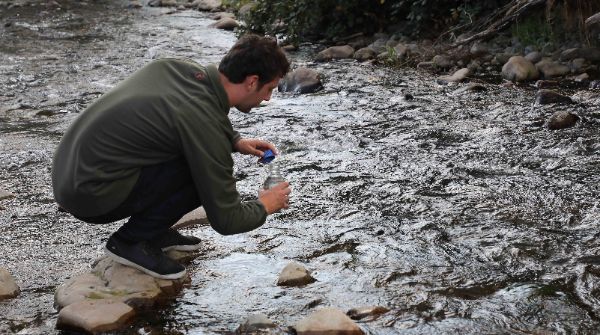Nutrients In Rivers - How Much Is Too Much?

Top New Zealand freshwater scientists have answered the question of how much nutrients should be permitted in our rivers to maintain ecosystem health.
Lead scientist and report author Dr Adam Canning (now based at James Cook University in Queensland) undertook an extensive analysis of data looking at macroinvertebrate (aquatic bugs) diversity in New Zealand waters that have differing nutrient levels.
Recently appearing in an international peer-reviewed scientific journal, the paper is seen as definitive research to set appropriate nutrient levels for nitrogen and phosphorus in our rivers to ensure good environmental outcomes.
Fish & Game New Zealand Chairperson Ray Grubb says the ground-breaking report provides a strong basis to further develop public policy on freshwater.
"Having been internationally peer-reviewed provides confidence that these figures are the right ones to use when implementing the National Policy Statement (NPS) Freshwater Management 2020 over the next couple of years," Grubb says.
The limits established in the study by Dr Canning and his fellow researchers - Dr Mike Joy and Professor Russell Death - also reinforce other suggested thresholds for nutrient guidelines established by the Australian and New Zealand Environment and Conservation Council and other international analysis.
Mr Grubb says having these unequivocal baselines will be particularly useful when it comes to improving degraded waterways.
"It provides clear guidance for nutrient concentrations for nitrogen and phosphorus to support macroinvertebrate targets - a key indicator of ecosystem and waterway health.
"If a river or lake is above the threshold, intervention will be necessary to meet targets so that the aquatic insect populations, and subsequently water quality, can improve."
A key element of the NPSFM 2020 is giving effect to the principles of Te Mana o te Wai which guide freshwater management to ensure the health and well-being of the water is protected, and human health needs are provided for before enabling other uses of water.
"Te Mana o te Wai establishes a hierarchy of obligations prioritising the health and well-being of water first, then ensuring health needs of people (such as drinking water) and then the ability of people and communities to provide for their social, economic and cultural well-being," Grubb says.
"This does not mean the water needs to be restored to a pristine state but it ensures the environmental bottom lines are clearly identified.
"This scientific paper is an important summary of knowledge on how nutrients affect ecosystem health in New Zealand and is going to be invaluable for defining the environmental requirements for our rivers."


 Gordon Campbell: On The Government’s Gaslighting About Growth
Gordon Campbell: On The Government’s Gaslighting About Growth NZ Labour Party: Luxon Misleading On The Economy
NZ Labour Party: Luxon Misleading On The Economy Dayenu: Holding Israel To Account For Genocide Takes More Than A Media Stunt
Dayenu: Holding Israel To Account For Genocide Takes More Than A Media Stunt NZCTU: 'Something Is Very Wrong In Our Society And Economy” - NZCTU Workforce Survey Shows People Fear For Future
NZCTU: 'Something Is Very Wrong In Our Society And Economy” - NZCTU Workforce Survey Shows People Fear For Future NZ Labour Party: Nicola Willis Prioritises Visitors Over Everyday Kiwis
NZ Labour Party: Nicola Willis Prioritises Visitors Over Everyday Kiwis Dunedin City Council: Caution Urged Over Bird Deaths At Waikouaiti Estuary
Dunedin City Council: Caution Urged Over Bird Deaths At Waikouaiti Estuary ACT New Zealand: Hon David Seymour's Speech to the Holocaust Centre of New Zealand
ACT New Zealand: Hon David Seymour's Speech to the Holocaust Centre of New Zealand


